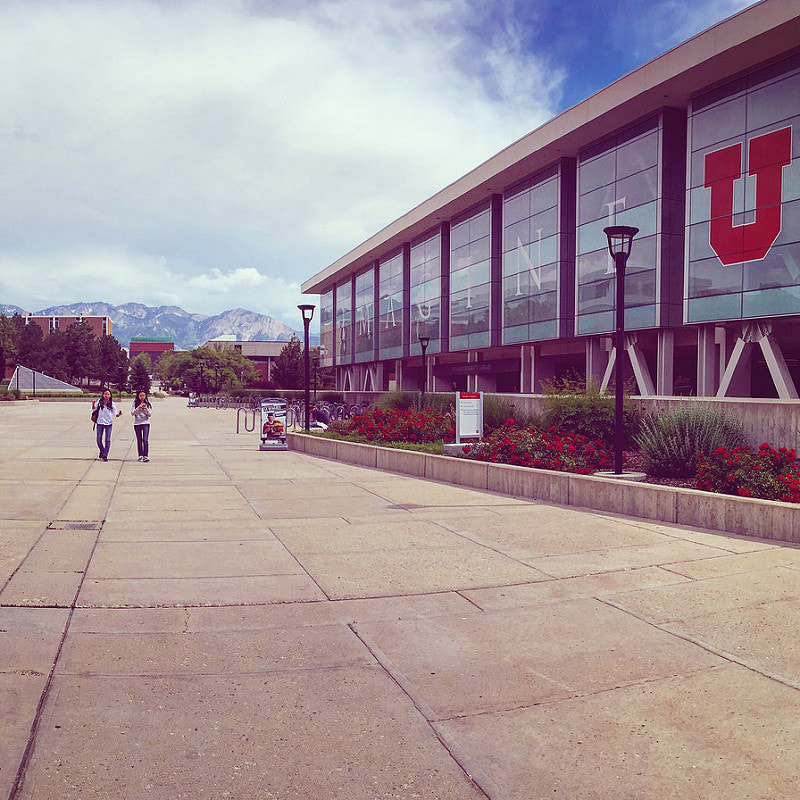| It didn’t take long for social media to react to a police tweet about the suspect sought in connection with Monday night’s murder near the University of Utah campus. “This is why you need to exercise your 2nd Amendment!” said one. “Maybe without the 2nd Amendment he wouldn’t be running around shooting people in the first place,” countered another. Really, people? Rather than wait at least until police caught the man suspected of killing a student in a carjacking and putting an entire campus on lockdown for |
| | hours, some were more than happy to jump back into the well-worn mud pit of never-ending and never-changing political arguments, armed with what they saw as a new way to score points. By now, most people understand that social media is a mixed bag, a complex stew of human empathy, important news, crass opportunism and voyeurism. Monday and Tuesday, as the Wasatch Front was gripped by an unfolding tragedy, all sides were on display. Twitter buzzed with heartfelt concern for the victims, useful information and links to news reports, as well as arguments about alleged police racism, terrorism and, yes, gun control. It was, by no means, all bad. And yet it may be worthwhile to wonder whether those involved might have responded differently if they were in a room together, face-to-face. A few years ago, UCLA professor Gary Small and his wife, Gigi Vorgan, co-authored a paper that focused on the social media reaction to a television news reporter whose speech suddenly became garbled during a broadcast. Naturally, many people worried the reporter might have suffered a stroke. But before anyone knew the answer, a video of the incident online was collecting thousands of “likes” and thumbs up as it was shared again and again. “People couldn't turn away,” the researchers wrote. “They were drawn to it, watching the images over and over with the same kind of grim curiosity that compels drivers to slow down and gaze at a fatal car crash …” The reporter, it turned out, suffered a migraine. Small and Vorgan asked, “… where is the empathy when thousands linger on YouTube, repeatedly watching this unfortunate woman possibly in real danger? “In an earlier time we might have been instructed to look away or give the person privacy. No more. We click and click.” And we argue and argue. And some make human tragedy a secondary concern. Small and Vorgan pointed to studies showing how technology may be desensitizing people’s neural circuits and damaging their sense of empathy. It may be worth considering whether a world of such people is a desirable place. What began Monday night and ended with an arrest on Tuesday was a community tragedy. More than that, it reached across several states and all the way to China, where the family of the victim, ChenWei Guo, mourns. Guo’s 24th birthday would have been this Sunday. Photos of him may be two dimensional, but they show a broad smile that suggests a playful and expansive personality; a life that made the human experience richer. Tragedy struck elsewhere, too. The suspect, Austin Boutain, now is wanted in connection with a Colorado murder, as well. Facebook posts of him and his wife show a smiling toddler and an infant — two young lives unaware of how things have been forever altered. In an earlier age, tragedies such as these were shared via newspapers, television and radio in a way that made us, for the most part, passive observers sharing a sense of horror and the need to reach out. Fifty-four years ago this month, a presidential assassination became a moment of shared humanity. People were aware of the political arguments concerning communism and a host of other things that might have been to blame, but these were confined to life’s periphery, at least for the moment. Today, to those who are constantly connected, that periphery often takes center stage. Social media played a positive role in many ways on Monday and Tuesday. It enabled police to spread the word about a potentially dangerous suspect and the need to shelter in place. It allowed people to find and share more photos of the suspect than police made available. But like any technology, it does what we make of it. Empathetic or desensitizing, informative or degrading — only we can decide. |


 RSS Feed
RSS Feed

